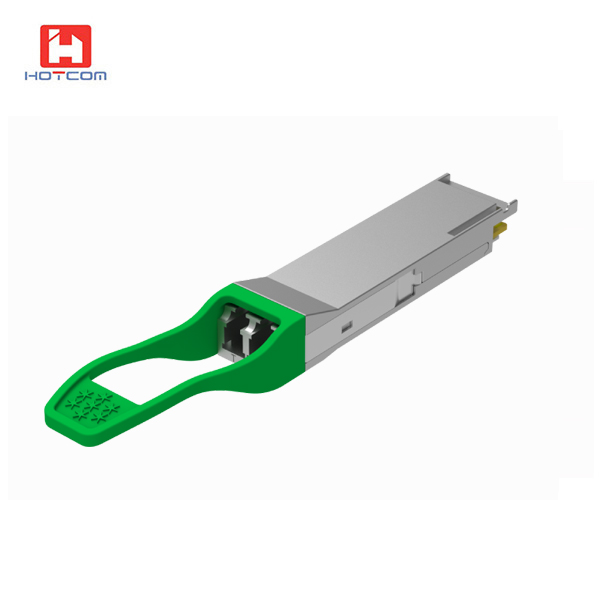The Hotcom 100G QSFP28 CWDM4 2km optical transceiver HT-100G-QSFP28--CWDM4-02 is designed for Data Center 100G CWDM4 Ethernet links reach up to 2km with FEC over Single-Mode Fiber (SMF).
The HT-100G-QSFP28-CWDM4-02 module converts 4 input channels of 25Gb/s electrical data to 4 channels of CWDM optical signals and then multiplexes them into a single channel for 100Gb/s optical transmission. Reversely on the receiver side, the module de-multiplexes a 100Gb/s optical input into 4 channels of CWDM optical signals and then converts them to 4 output channels of electrical data. The central wavelengths of the 4 CWDM channels are 1271nm, 1291nm, 1311nm and 1331nm as members of the CWDM wavelength grid defined in CWDM4 MSA. The high-performance uncooled CWDM DFB transmitters and high-sensitivity PIN receivers provide superior performance for 100-Gigabit Ethernet applications up to 2km links.
QSFP-100G-CLR4 and 100G QSFP28 CWDM4 optical modules are both of 2KM, what is the difference?
With the continuous surge of data center traffic, the market demand for 100G optical modules is also further increasing, common 100G optical modules are SR4, LR4, ER4, etc. However, in the actual application, due to the length of the fiber optic link has a long and short, relying on a few types of optical modules alone can not satisfy the most cost-effective data center optical network transmission solutions.
Therefore, in the medium and long distance, CWDM4 MSA organisation and 100G CLR4 alliance also formulated the 100G QSFP28 CWDM4 standard and 100G QSFP28 CLR4 standard with a transmission distance of 2 km respectively. So what are the similarities and differences between 100G QSFP28 CLR4 and CWDM4 optical modules, which also have a transmission distance of 2KM? H&T will reveal the answer for you.
Similarities:
1, both interface types are duplex LC;
2, both use CWDM wavelength division multiplexing technology, working wavelength are 1270, 1290, 1310, 1330nm;
3, both single-mode optical modules, transmission distance are 2KM.
Differences:
100G QSFP28 CWDM4 optical modules must be used for fiber links with forward error correction (FEC) function.
The 100G QSFP28 CLR4 optical module can be used for both fiber links with forward error correction (FEC) and fiber links without forward error correction (FEC).
The 100G QSFP28 CLR4 optical module can also maintain low-latency and low-power performance in optical links without FEC, which makes the 100G QSFP28 CLR4 optical module more popular in high-performance computing, high-frequency trading and other fields.
|
Interface
|
Form Factor
|
Wavelength
|
Fiber
|
Span
|
FEC Support
|
|
100G CLR4
|
QSFP28
|
1310nm window, 20nm spacing
|
Duplex single-mode fiber (with LC
connector)
|
Up to 2 km
|
FEC and non-FEC
|
|
100G CWDM4
|
FEC
|
Hotcom's 100G QSFP28 CWDM4 optical module and 100G QSFP28 CLR4 optical module are cost-saving solutions for data center 2km transmission applications, where the 100G QSFP28 CWDM4 optical module is more commonly used in data centers.



